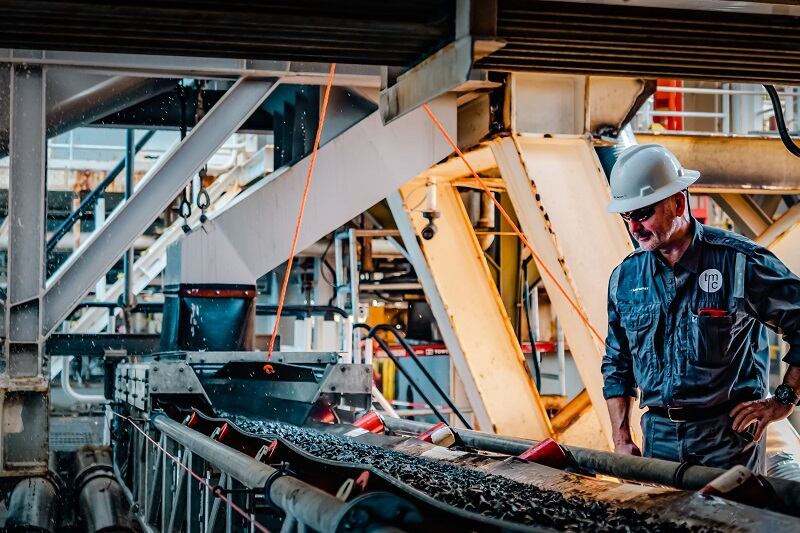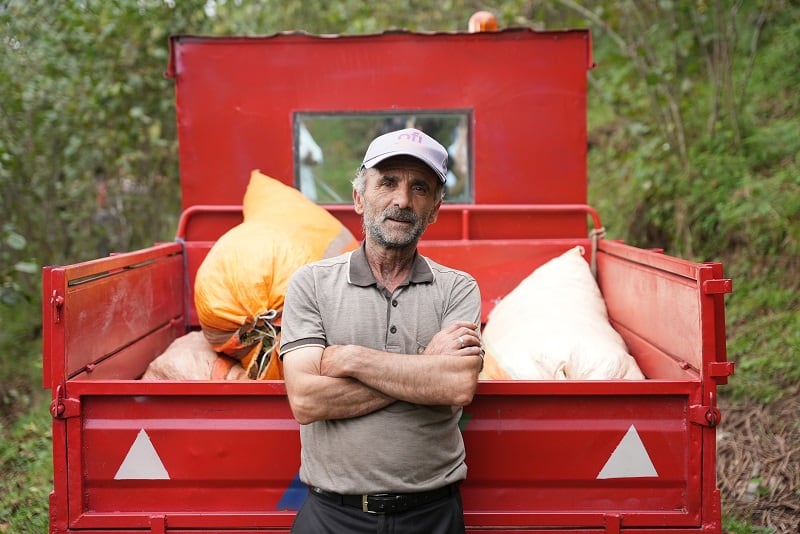A new report claims to provide the most comprehensive assessment to date of the extent to which the fledgling deep-sea mining industry is economically viable. The conclusion? It’s highly complicated, widely unproven and simply doesn’t add up.
Deep-sea miners – led by Canada-based the Metals Company (TMC) and Norway’s Loke Marine Minerals – are hoping to get the green light to begin commercial mining in international waters. They plan to collect minerals from the seabed floor such as cobalt, nickel, copper and manganese. These are much needed for the production of batteries and to power renewable energy sources. An onshore wind plant requires nine times more critical minerals than a gas-fired power plant, for example.
These minerals should not, the deep-sea miners argue, be extracted from terrestrial mines often located in vulnerable regions of the world – such as rainforest areas – and linked to important ethical and geopolitical challenges. For example, the expansion of industrial-scale mines that extract cobalt and copper for rechargeable batteries has led to forced evictions and human rights abuses, including sexual assault, in the Democratic Republic of the Congo, according to a report from Amnesty International.
The International Seabed Authority (ISA), the UN body that regulates the seafloor in international waters is expected to give a decision on authorisation later this year.
An avenue to strengthen critical mineral supply chains
Loke already has permission from the Norwegian government to move forward with its plans in Norwegian waters. The Cook Islands has also opened its national waters to exploratory mining activities.
The US government is also considering engaging in deep-sea mining in domestic waters. In December last year, thirty-one Members of Congress wrote a letter to the Secretary of Defense and the Pentagon urging the Department of Defense to “explore every avenue to strengthen our rare earth and critical mineral supply chains”, emphasising “the importance of evaluating and planning for seabed mining as a new vector of competition...”.
TMC has an application pending for US government funding to build a seabed minerals processing plant in Texas. Its main plan is to mine the Clarion-Clipperton Zone in the north Pacific, a vast 4.5 million sq km section of ocean located between Hawaii and Mexico.
The risks associated with deep-sea mining
The new report, meanwhile, from the Ocean Foundation, an NGO, elaborates on some already documented risks associated with the practice of deep-sea mining. “The potential impacts of deep-sea mining on fragile ocean ecosystems and human rights cannot be overlooked,” it said. It “carries the risk of irreparable damage to ocean ecosystems and violations of human rights and Indigenous Peoples' rights, exposing investors to significant liabilities and reputational risks”.
Extracting nodules lodged in the ocean floor is rife with technical challenges and overlooks the rise of innovations that would eliminate need for deep-seabed mining, it said.
“Seabed minerals – nickel, cobalt, manganese, and copper – are not ‘a battery in a rock’ as mining companies claim. Some of these minerals power last-generation technology for electric vehicle batteries but car makers are already finding better and safer ways to power batteries,” said Maddie Warner of the Ocean Foundation and one of the report’s lead authors. “Soon, innovations in battery power will likely sink demand for seabed minerals.”
Unrealistically optimistic financial models
Other problems include a volatile minerals market, large upfront operational costs and incomplete regulations that currently anticipate robust costs and extreme liabilities.
Compounding all of these risks is the mounting international pressure to halt deep-sea mining, said the Ocean Foundation. Currently, 24 countries have called for a ban, moratorium, or precautionary pause on the industry.
Banks, financial institutions and insurers have also cast doubt on the industry’s viability. In July 2023, 37 financial institutions urged governments to pause deep seabed mining until the environmental, sociocultural, and economic risks are understood and alternatives to deep sea minerals have been explored.
“When it comes to deep sea mining, investors should be on high alert and undertake robust due diligence,” said Bobbi-Jo Dobush of the Ocean Foundation and one of the authors of the report. “Trying to mine minerals from the ocean floor is an unproven industrial endeavour fraught with technical, financial, and regulatory uncertainty. More so, the industry faces strong Indigenous opposition and human rights concerns. All of these factors add up to substantial potential financial and legal risks for both public and private investors.”
“Significant challenges must be overcome before DSM can be recognised as economically viable or as a responsible industry that can make a positive economic contribution to society,” the statement said. Banks worldwide including Lloyds, NatWest, Standard Chartered, ABN Amro, Credit Suisse and BBVA have also shunned the industry. Additionally, 39 companies signed pledges not to invest in deep-sea mining, not allow mined minerals to enter their supply chains and not source minerals from the deep sea. These companies include Google, Samsung, Philips, Patagonia, BMW, Rivian, Volkswagen and Salesforce.
What’s the response from the deep-sea miners?
A TMC company spokesperson said that rather than engaging in productive dialogue, some activist groups "unfortunately concentrate on speculative reports designed to confuse stakeholders". Pointing to some of its testing work, it said activists are deliberately overlooking the successful technology trials and mounting evidence that nodules can be developed responsibly, and with far fewer costs to both planet and people than mining on land in populated, biodiverse ecosystems.
“We extend a renewed invitation to these groups, as outlined in our open letter last year, to collaborate with us in setting high standards and robust environmental protections for this emerging, inevitable industry,” the spokesperson told AgTechNavigator.
Loke’s chief technology officer Tore Halvorsen also rebuked much of the report’s findings. Regarding the claim that deep-sea mining represents extensive and expensive technical challenges at unprecedented depths, he told us: “Thanks to over 50 years of experience in deepwater drilling and subsea oil and gas production systems, the technology gaps towards a deep sea mineral production system are limited.” He added that all the critical components needed for deep-sea mining collection are used in the deep water ROV and AOV (remotely and automated operated vehicle) business.
Loke’s CEO Walter Sognnes added: “The development of an offshore oil and gas field is significantly more complex and costly than the offshore part of a deep-sea mining projects. Another important point to address is that the offshore cost element of a deep-sea mining project represents only approx 30% of the total cost. The main cost is associated with the onshore processing plant.”
He added: “Exploration for manganese nodules are conducted mainly by the use of ROV and AUV and can be done very efficient and at very low cost. We estimate that reserves representing more than 20 years of production can be mapped for less than US$10 million.”



